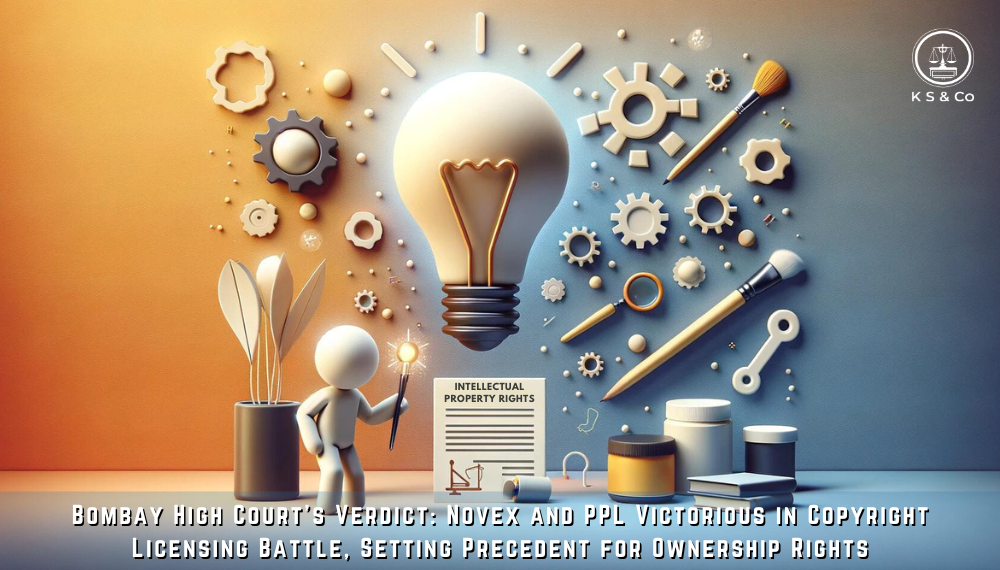
April 19, 2018
The Bankruptcy Code is Evolving
The Bankruptcy Code is Evolving
In May 2016, India enacted the Insolvency and bankruptcy code, as a major legal reform. The new framework is the time bound process in which cases are admitted and are supposed to be resolved within 270 days; if not, companies go into liquidation. A fundamental feature of insolvency law is creditor protection, which involves altering the existing relationship between a company and its creditors and giving creditors, the front seat. This is positive from the perspective of improving the credit culture of the country which will lead to better availability of credit and eventually help in improving the ease of doing business. In the short period of time that the insolvency code has been in force, both the NCLT and the NCLAT have adapted admirably to new legal concepts and strict procedural timelines. Still, a year after its introduction, the code remains a work in progress. The strengthening of enforcement and adjudicatory mechanism would require the involvement of various agencies coordinating with the adjudicatory authorities for speeding up the process of liquidation for timely claim fulfillment of the creditors. The tribunal in this regard has made robust progress for safeguarding the rights of the creditors and interpreting the legislative aspect.
LENDERS TO INVOKE PERSONAL GUARANTEES
After the enactment of Insolvency and Bankruptcy Code (IBC), the frequently asked question is as to whether the property which is not owned by the Corporate Debtor falls within the ambit of Moratorium period? Guarantee is very convenient form of security available to the creditors and guarantors plays a vital role in credit assessment. The absence of clarity in Insolvency and Bankruptcy code with regard to treatment of guarantee during Moratorium declared against debtor has caused confusion about guarantees to the banker. The latest judgment of the National Company Law Appellate tribunal (NCLAT) in the case of State Bank Of India vs. Ramakrishnan and Veesons Energy Limited is in a direct contradiction of its order in the case of “Schweitzer Systemtek India Private Limited” and “Alpha and Omega Diagnostics (India) Limited”. In the case of Schweitzer the NCLT, Mumbai while examining the aspect of Moratorium under section 14 of IBC held that the ‘Moratorium’ has no application on the properties beyond the ownership of Corporate Debtor. The basis for arriving at such conclusion by NCLT is the language used in Section 14(1) (c) of the code which refers “its assets” and denoting the property owned by Corporate Debtor. Adjudicating Authority observed that term “its” is significant and denotes the property owned by Corporate Debtor. The same views was upheld by NCLAT in Alpha and omega diagnostics (India) Limited vs Assets Reconstruction Company of India Limited whereby the Adjudicating Authority observed that the moratorium shall be applicable in respect of any action to foreclose, recover or enforce any security interest created by the Corporate Debtor in respect of its property (here property represents the property of the Corporate debtor alone). In contradiction to the above cases, NCLAT in the case of State Bank of India vs. Ramakrishnan and Veesons Energy Limited held that Moratorium will not only be applicable to the Property of the “Corporate Debtor” but also on the “Personal Guarantor” by making it contradicting precedent against its earlier order. The Adjudicating Authority has restrained State Bank of India from selling the assets of personal guarantor of Veesons Energy System during the Moratorium period granted under the Insolvency Process. The NCLT ruled in favour of Mr. Ramakrishnan and stated if guarantors personal property is sold to realize part of dues from the company, it would create a charge on assets of the company and also amount to encumbering the properties of the corporate debtor (Veesons Energy). Two contradictory judgments by the same bench have created confusion with regard to applicability of moratorium in respect of guarantor’s assets. Our Views Even though, the above verdict of NCLAT in the case of State Bank of India vs. Ramakrishnan and Veesons Energy Limited puts a bar on the sale of Guarantors assets during moratorium period but to give effective meaning to the contract of Guarantee and to generate a sense of security among the creditors, the assets of the Guarantor should be kept under vigilance and a percentage of the guaranteed amount should be deposited with the court. The step will ensure that the guarantor does not sell out with his assets during the moratorium period.
PRIMACY OF THE IBC – RACE WITH WINDING UP
In landmark judgment for bankruptcy regime, the issue which arose before Bombay high Court in “Psl Limited vs. Jotun India Pvt. Ltd” was whether an application under the IBC can be made even in cases where a winding up petition has been admitted and is pending before a company court and whether such an admission of a winding petition allows the company court to injunct proceedings before the NCLT. The court in deciding the issues considered that the IBC has been enacted to set up the insolvency and Bankruptcy resolution process in a strict time bound manner, powers which can only be exercised by the NCLT and not by the company court. It is for this reason that pending the Insolvency resolution process a moratorium is provided under Section 14 of IBC.The court observed the most fundamental distinction between the provision of the Companies Act and IBC, while under the Companies Act winding up would be matter for the court to decide alone, under IBC, Creditors Committee is left to decide the fate of the Company. The transfer rules provides that pre-notice Winding-up proceeding will be governed by the IBC and post notice winding up Proceeding is required to be dealt with in accordance with provisions of Companies Act, 1956 and the Companies (court) rule, 1959.” The Hon’ble High Court, held that NCLT is not a court subordinate to the High Court and hence as prohibited by the provisions of Section 41(b) of the Specific Relief Act, 1963 no injunction can be granted by the High Court against a Corporate Debtor from institution of proceedings in NCLT. Similarly, under the Companies Act, 1956 there being no provision wherein proceedings under NCLT instituted under I&B Code 2016 can be injuncted. There is an express bar contained in Section 64(2) of I&B Code which prevents any court, tribunal or authority from granting any injunction in respect of any action taken, or to be taken, in pursuance of any power conferred on NCLT under I&B Code 2016, hence, an Application under the Insolvency and Bankruptcy code, 2016 may be made even in cases where winding up petition has been admitted by a company court.
DIVERGENT VIEWS ON ACCEPTANCE OF RESOLUTION PLAN
“The committee of creditors may approve a resolution plan by a vote of not less than seventy five percent of voting share of the financial creditors.” Section 30(4) of the Insolvency and Bankruptcy code which deals with submission of resolution plan is the point of legal debate due to opposite views taken by NCLT, Mumbai and NCLT, Hyderabad. The point of discussion at this point is whether the approval by a committee of Creditors (CoC) is of a mandatory nature i.e. no resolution plan is valid without an approval of seventy five percent of voting share of financial creditors or can it be approved by CoC by a majority of less than seventy five percent? Adjudicating Authority of Mumbai held that it is well stated in the provision of the code; mandating resolution approved by CoC means a resolution with vote not less than 75% that is all decisions of CoC shall be passed with vote not less than 75% of voting share of financial creditor. The Hyderabad bench however took a contradictory view on this point. In the case of Kamineni Steels & Power which involves a one-time settlement, received 66.6 % vote share from group lenders. The bench supported its view by stating that the main preamble of the IBC is the resolution if the corporate debtor rather than liquidation of the corporate debtor. Relying on the word “may” in section 30(4) it observed that CoC can approve a plan with less than 75% too and it was incumbent upon the Adjudicating Authority to use its judicial discretion under section 31. Recently, The National Company Law Appellate Tribunal (NCLAT) has struck down an order passed by the bankruptcy court that approved a resolution plan for Kamineni Steel & Power despite the fact that it failed to receive the mandatory 75 per cent vote share, a pre-requite according to the Insolvency and Bankruptcy Code (IBC) to get the plan endorsed by the court. Also, presently the committee of creditors may approve a resolution plan by a vote of not less than seventy-five percent of voting share of the financial creditors. One of the other major points of discussion here was that the criteria for approval of a plan should be based on a ‘minimum specific percentage of creditors present and voting’ instead of the ‘total voting power’. This will encourage all financial creditors to participate in the meeting and vote.
APPLICATION OF LIMITATION ACT IN IBC
A considerable debate has ensued on whether the Limitation Act, 1963 is applicable to proceedings under the Insolvency and Bankruptcy code (IBC), 2016. The Limitation Act was enacted as a guiding factor to put a time frame within which any available legal remedy is to be exercised especially where an enactment is not having any specific provision towards limitation. However, the reasoning has been varying from time to time leading to an antithetical approach. In Black Pearls Hotels Pvt. Ltd. vs Planet M Retail Ltd the consideration that arose was whether the application preferred by Appellant-operational creditor (Black pearls hotel Pvt ltd.) was barred by limitation. The appellant contended that Insolvency and Bankruptcy code, 2016 came into force with effect from 1st December, 2016. Therefore the right to apply under I&B code accrues only on or after 1st December, 2016, and not before the said date thus the application cannot be said to be barred by limitation. Appellant referred to the decision of NCLAT in the case of Neelkanth Township & Construction Pvt Ltd vs. Urban Infrastructure Trustees Ltd. whereby it was held that the Limitation Act, 1963 to the Corporate Insolvency resolution process under the Insolvency and Bankruptcy Code, 2016 (IBC) would not be applicable to Insolvency and Bankruptcy Code. The judgment of the Appellate tribunal was appealed by the corporate debtor before the Supreme Court by way of a civil appeal, the Supreme Court dismissed the appeal while keeping the question on the applicability of Limitation Act to the Code open, which once again leaves the question unanswered. The question of applicability of limitation act was again in limelight in recent case of B.K Educational Services Pvt Ltd vs. Parag Gupta & Associates, where Supreme Court stayed the order of National Company Law Appellate Tribunal which stated that the provisions of the limitation act were not applicable for initiation of Corporate Insolvency Resolution Process under Insolvency and Bankruptcy code. The matter came up in an appeal filed by B.K Educational Services Pvt Ltd against the order of NCLAT contending that the NCLAT failed to consider various decisions of the Supreme Court wherein the court had held that the Limitation Act was based upon the policy to fix a life span of legal remedy for the purpose of general welfare. The appellant (B K Educational Pvt ltd) alleged that a person should not be allowed to initiate Corporate Resolution Process with respect to stale debts and hence the proceedings before the Court or the Tribunal should be governed by the Act constituting the said Court or Tribunal to the extent it is not contrary to the special statute. While holding so the reliance was placed on Section 433 of the Companies Act by the appellant claiming that the particular Section provided for application of the Limitation Act to proceedings before the NCLT. The validity of a “debt” that is beyond the prescribed period for limitation for recovery of dues for the purpose of initiating insolvency proceedings under the Code cannot be ruled out entirely. Since the Hon’ble Supreme Court, in the appeal filed against the Neelkanth Judgment, has not decided the question of the limitation being applicable to insolvency proceedings and kept the same open, there is presently no conclusive position on the controversy as on date. Our Views Even though, the position of the law is not yet clear with regard to the application of limitation under IBC, the basic idea behind limitation act is to discourage people from filing time barred debts. According to the Article 137 of the Limitation Act 1963 ‘The period of limitation for any other application for which no period of limitation is provided elsewhere in this Division is three years and the limitation commences from the date when the right to apply accrues’.
Subscribe to our Newsletter
Sign up for daily, weekly, monthly newsletter to get the latest news updates delivered directly to your inbox.
Recent Posts
-

Protecting Brands In India And Europe: Comparison Of Trademarks Laws
February 21, 2024



Leave a Reply